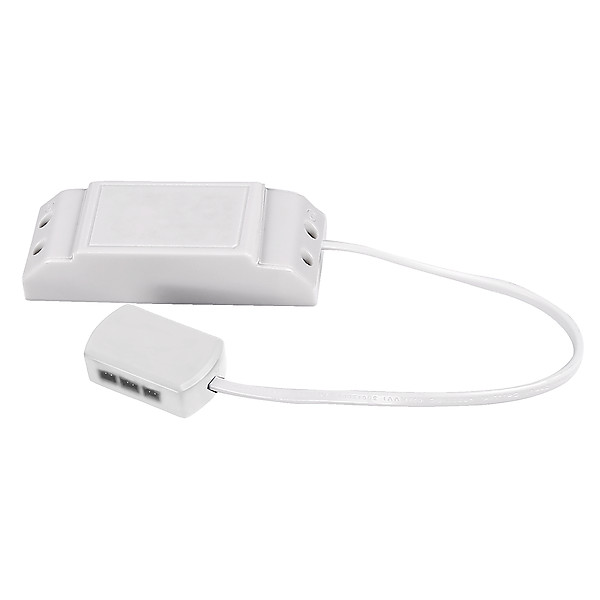Welcome to Straumen, the administrative centre of Inderøy municipality, Trøndelag county, Norway. It occupies 1.33 square kilometres (330 acres), and has a population of 1 642 people (2017).
Views of Straumen


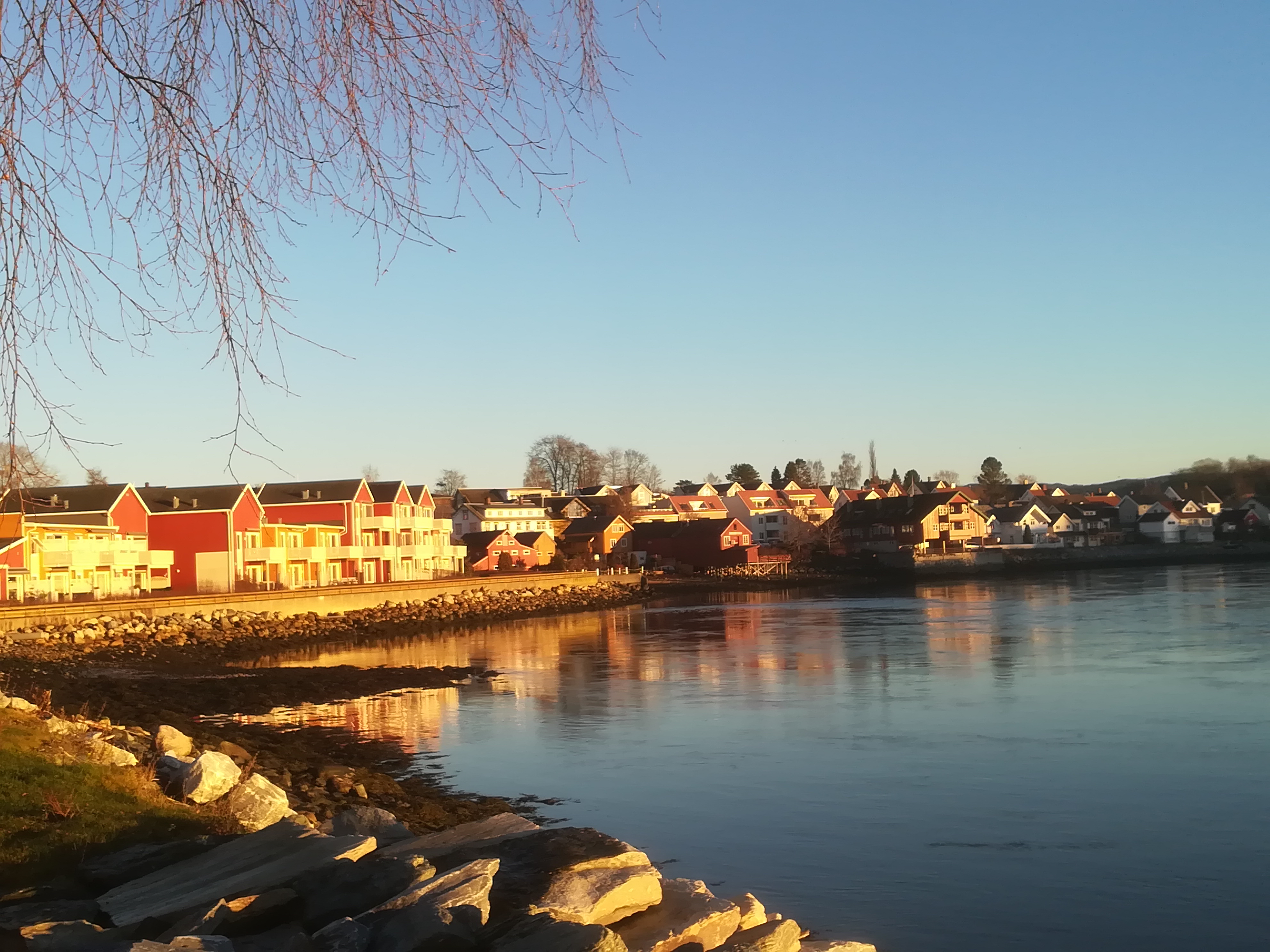
Old Sakshaug church


Shopping


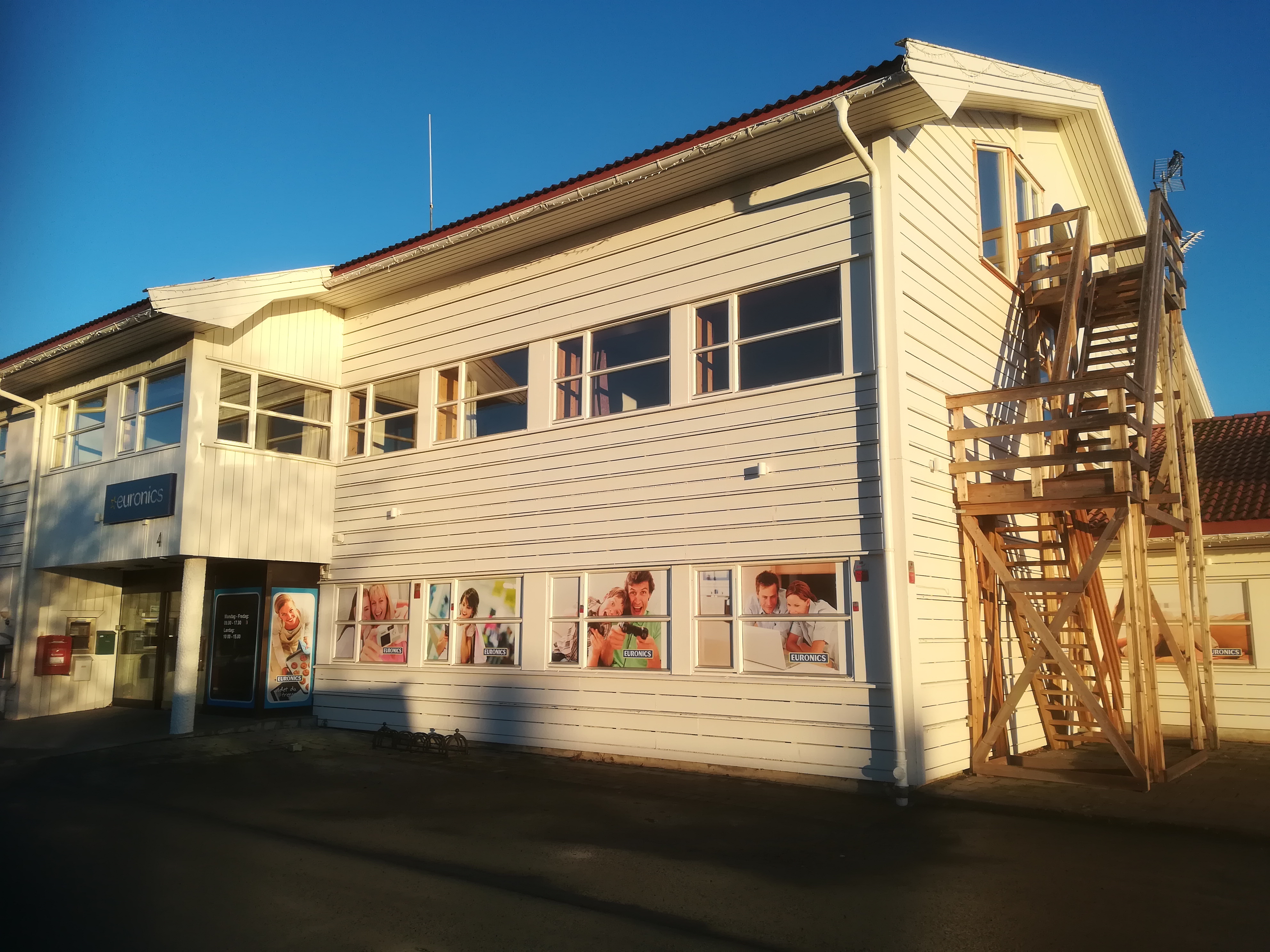




Services



Welcome to Straumen, the administrative centre of Inderøy municipality, Trøndelag county, Norway. It occupies 1.33 square kilometres (330 acres), and has a population of 1 642 people (2017).















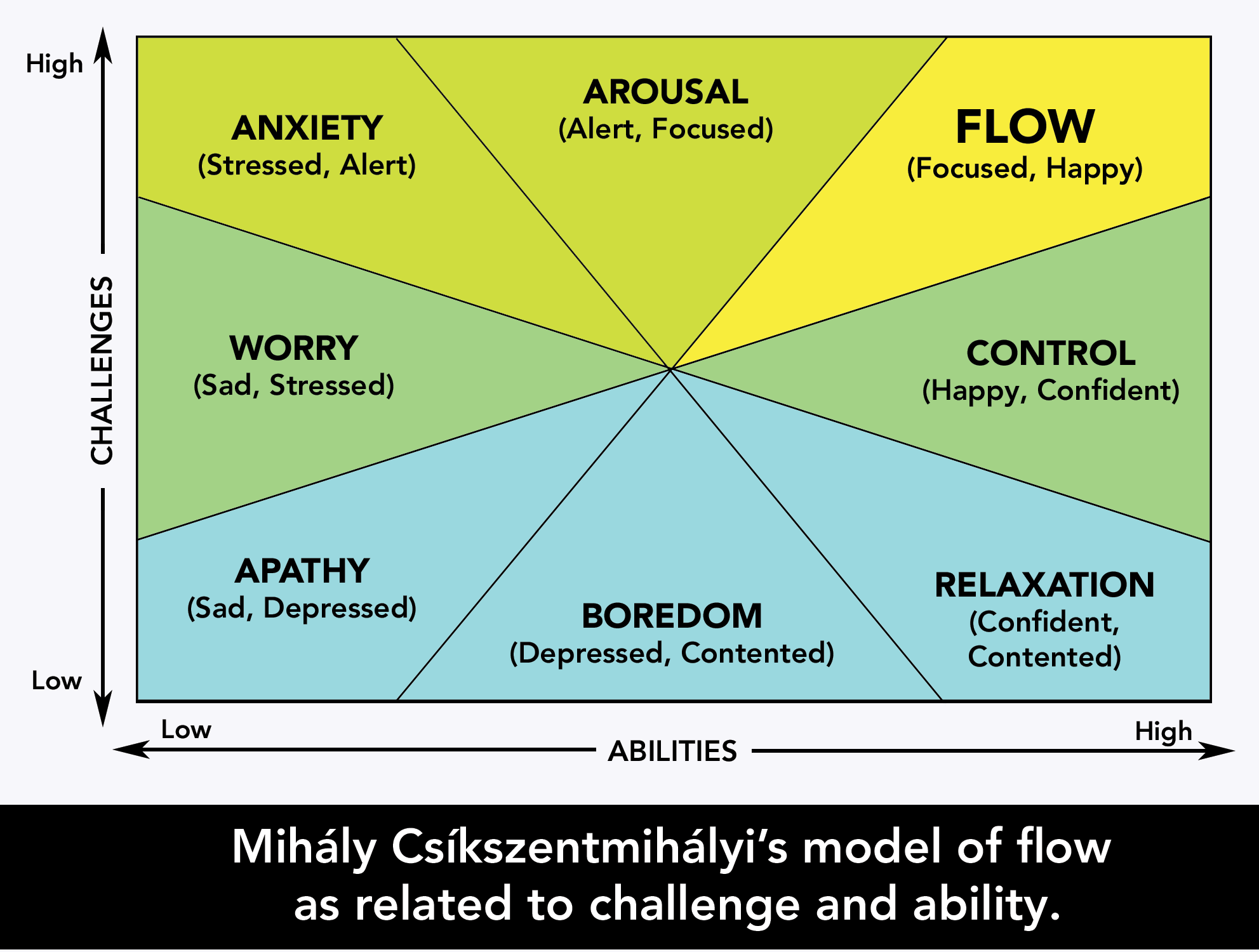
Flow: The Psychology of Optimal Experience, presents Mihály Csíkszentmihályi’s theory that people are happiest when they are in a state of flow, which is a state of total absorption. In this state, a person is intrinsically motivated, goal-oriented, but seeking challenges that increase their overall happiness.
In Csíkszentmihályi‘s model, there are seven other states, but these are all in some way inferior to the state of flow.
At the prison where I worked as a teacher, my primary focus was to encourage flow. Prison sentences can be long, and unbearable. Allowing inmate students to immerse themselves into a topic, most often has a positive effect. In particular, I found that it was easiest for inmates to enter a state of flow through creative activities. The actual creative field was not important. For some it was through music, for others it was artistic painting. Drama and theatre were often used. Woodworking, knitting, ceramics were other areas. This does not mean that every inmate I was in contact with was able to flow.
One group that did not seem to benefit from this approach were those diagnosed, or more often suspected of being, sociopaths. These people had their own manipulative agenda that could be mistaken for educational activity, but was anything but.
One does not have to work very long at a prison to realize that inmates learn more working in a hobby room, than they do reading in a classroom. It has been documented, for example, that delinquent behavior can be significantly reduced in adolescents, if they are given the opportunity for two years of enhancing flow through such activities. (See: Nakamura, J., & Csikszentmihályi, M. (2001). The concept of flow. In Handbook of positive psychology (pp 89-105). New York: Oxford University Press.)
The Norwegian prison system has seen the positive impact that flow in creative areas has on inmates. Many prisons provide inmates with the opportunity engage creatively. Bands and theatre groups are actively encouraged. In November and December, inmates are given the opportunity to use the hobby room to make Christmas presents for their loved ones.
People who have experienced flow feel focused on what they are doing; ecstasy; great inner clarity, knowing what needs to be done, and how well they are doing; knowing that the activity is doable, that their skills are adequate for the task; serenity; timelessness – thoroughly focused on the present, hours seem to pass by the minute; intrinsically motivated.
Flow experiences lead to growth. It is working to master an activity. To maintain this state, increasingly greater challenges must be sought out, resulting in skill improvements, personal growth and feelings of competence.
Flow has a documented correlation with high performance in the fields of artistic and scientific creativity, teaching, learning and even sports. It encourages persistence and achievement, lowers anxiety and raises self-esteem.
Sometimes, inmates need to move beyond art. For example, at one time I had a older herder as a student. He had actually signed up to study at the school because he wanted to avoid working in the pallet factory. In our conversation it turned out that he had a computer, but didn’t know how to do anything with it, except surf the net!
The prison has access to any number of text books, on almost any subject. Yet, they are of very little help, when a sizable minority of potential students are functionally illiterate. Even, if an inmate can read, it doesn’t mean that a textbook will be meaningful. The herder was taught how to use Microsoft Office products, based on his one and only consuming interest – herding. He was able to write texts about it, with graphics showing it, in Word. He was able to make PowerPoint presentations. Most importantly, he was able to model his herd, using Excel, where he could see the economic consequences of different decisions.
The herder was only in prison for a short time. Soon after he left, another herder was imprisoned. He had obviously been in touch with the first one, because he came to the school and asked to learn Excel, so that he too could model his herd.
Mathematics is often difficult to teach in a conventional secondary school, because students, even in the same class, are at different levels, and have different abilities and interests. At a prison school, this is also the situation. However, by focusing on the individual and – in particular – by giving individual, rather than group, instruction, some inmates can have surprisingly high learning curves in mathematics. They frequently surprise themselves. The key is to help that person unlearn those past approaches, that result in mistakes. Once these have been successfully unlearned, more appropriate problem solving techniques can be learned and developed.
Not all school administrators appreciate this focus on flow. Some are particularly keen on increasing the number of exams inmates pass. In their eyes, it improves school statistics, and makes the school look better. These administrators don’t seem to be aware that most inmates do not have the prerequisites to pass exams. Throughout their entire lives, most have been betrayed: at home, at school, by social workers, and by society in general. Inmates need to have positive school experiences, before they are able to study more rigorous subjects, and pass exams.
While there are many exceptions, the majority of criminals do not engage in criminal activity during their working hours. It is their leisure hours that are the problem. That is why it is so important to help inmates develop all consuming hobbies. If they are spending their time after their release restoring a Harley-Davidson CVO Street Glide, then they won’t be spending their time discovering the best way to break into your house.
Csikszentmihalyi, Mihaly (1990). Flow: The Psychology of Optimal Experience. New York: Harper and Row. ISBN 0-06-092043-2
Miswanting
Originally this weblog post was titled Miswanting. This theme seemed to be driving in two different directions simultaneously, so it was split into two sections: Leisure followed by Flow. Soon, I realized these would have to be published as two separate weblog posts.
While working on Leisure, it became apparent that it was going to be easier to operationalize my thoughts, by working on a specific example. So, rather than writing more generally about leisure, I decided to focus on Christmas, and what I regard as the festive season’s most serious challenge – its lack of structure and moderation.
This split into two posts, left me with a few paragraphs that didn’t fit in either location, the introduction to miswanting. Here it is, reworked as an afterthought.
Miswanting is the coveting of something that one mistakenly believes will make one happy. For a short introduction to the term, see: https://www.apa.org/science/about/psa/2004/04/pelham.aspx
Miswanting wealth. Typically, people covet money. Yes, one needs a minimum of it in this post-modern world, and far too many people have insufficient quantities. Money in excess can lead to other challenges, that can be just as numbing as poverty.
Miswanting leisure. People also covet leisure, and renounce work. It is a bad choice. It turns out that almost everyone is happier working, than engaging in leisure activities! Yet, they imagine that leisure will make them happier.
People are happier in structured situations, where they have specific operational goals, than they are in less structured situations, where they are out to have fun. They are less depressed, they have less anxiety issues, they have more confidence, and they feel more alive!
Please save me from leisure. The worst punishment I can imagine is being a passenger on a luxury cruise ship. I have nothing against the sea, but would prefer to work with the wind to make passage on a sailboat, rather than rely on fossil-fueled engines on some monster vessel. I would prefer to work as a crew member, rather than to be pampered as a paying guest.
Even though I am retired, I treat five (or even six) days of the week as work days. I may not put in as many hours as in my younger years, but I show up for work with an agenda, and a schedule. My goal is flow.
In a few weeks the festive season will be upon us: this conjoined event stretches from Christmas to New Year’s day, or – for some – Hanukkah, which starts and ends even earlier, from sunset, 2018-12-02 to nightfall, 2018-12-10.

The social costs of this festive season are extraordinarily high. There is a peak in drug offenses, drunk driving and other forms of anti-social behavior. Traffic accidents increase, not just because of increased drug and alcohol consumption, but because people are driving tired.
Another challenge with Christmas is that people attempt to buy happiness, through expensive gifts. These do not make people feel any better, but can put people into debt.
Overeating is another factor that has a negative impact on health. While in many countries suicide rates are at their lowest in December, mental health issues peak. Once Christmas is over, there is a sharp rise in suicides, often peaking on New Year’s day. Excessive eating and drinking combined with inadequate exercise erodes physical and mental health, including but not restricted to insomnia, depression and stress.
If that is not enough, then the Christmas season signals a time to file for divorce, or in other ways end relationships, including friendships.
Perhaps the best introduction to an American Christmas is Penne Restad’s Christmas in America. (Oxford University Press, 1995).
The celebration of Christmas is not an old tradition. It was not even a holiday until the middle of the 19th century. In the United States, the American Civil War combined with urbanization and industrialization helped to promote it as a means of creating social unity. Prior to this, people of different denominations followed traditions brought with them from Europe. With improved communication and transportation, there was a greater awareness of ethnic and religious pluralism. At the same time, there was increased political and economic tension between regions, and groups. Soon Darwinism and science were challenging religion.
This 19th century Christmas gradually transformed itself into a family gathering that merged faith with commercialism. Yes, people may attend church services, but it was not the church, but the house that was the focal point of the holiday.
Christmas trees were in use by 1832. By the 1850s, Christmas was fully entrenched in Northern cities. After the Civil War, it captured the South.
Christmas tree ornaments emerged about 1870, with imports from Germany. While there were some Christmas cards in the early 1850s, demand exploded by about 1875. These soon replaced the more traditional Christmas letter.
Christmas gift-giving had its origins in the 1870s. Part of this was related to problems of extreme economic inequality that threatened social relationships. Thus, many of the gifts were charitable.
The American Christmas is incomplete without Clement Moore’s An Account of a Visit from Saint Nicholas in the 1820s. Here is the spirit of Christmas in the persona of Santa Claus, with fur-trimmed red suit, sack of toys, reindeer, sleigh and home at the North Pole.
Christmas dinner is so notable that it warrants its own Wikipedia article. See: https://en.wikipedia.org/wiki/Christmas_dinner
So how should Christmas be managed to avoid its negative aspects? The answer is to build more work-like attributes into it.
Activities should be planned, and scheduled. People should know what is happening, and what they personally are expected to do.
In the build-up to Christmas, people can be asked to design Christmas cards, to write an annual Christmas letter and/ or to plan meal menus. They should also use their skills to design and make decorations and presents. To reduce costs, guidelines can be given that make these more appropriate. For example, gifts are to be made from re-purposed materials.
Alcohol is not part of a normal work week, and (for me) there is no reason why it should be part of a leisure event, such as Christmas. Avoiding alcohol is yet another way to reduce costs, and to ensure relationships endure. To prevent meals from expanding waistlines, there should be calorie limits in place, and moderate quantities. At Cliff Cottage, the permanent residents weigh themselves daily. Some people make their weight publicly available, while others keep it private.
When families get together to celebrate, there should be fixed times to arise, and to head off to sleep. There should be opportunities for exercise, and opportunities for every individual to be alone. Child-minding should be an activity distributed among the adults.
While there may be a desire to spend some time listening to music, or watching a film, moderation is also a key here. In fact, it could be more fun to sing, or perform musically together, rather than to listen to someone else’s efforts. Perhaps, the entire family could have fun making a video, rather than watching someone else’s.
Let us all make Christmas fun again, but putting structure and moderation in place during Christmas, 2018!
This weblog post is inspired by Friday’s shopping trip to Jula and Clas Ohlson, two Swedish equivalents of a hardware chain store, in Steinkjer, about 30 km north-east of Cliff Cottage, Vangshylla. On this shopping trip, I ended up buying a number of LED lighting components, not for any specific purpose but for playful learning. There was one impulse purchase, five meters of string lights with sparkly effect!

Lighting the stairway
According to my timeline, sometime in 2020, the house will be have a new main stairway. I intend to make it myself, using solid oak. It is difficult to buy hardwood, especially in rural Trøndelag. My solution will be to buy solid oak kitchen counter material which comes 26 (H) x 600 (D) x 2 400 (L) mm ( or about 1″ x 24″ x 96″) , and to cut it into suitable pieces, four treads to a countertop. Materials will cost me about NOK 4 000 (USD 500). Getting someone to make a stairway would cost at least five times that price. Here is a link to what I am thinking about. Biltema can be translated as “car theme”, and is the same in Swedish and Norwegian. It is yet another Swedish chain, even more dominated by male customers, than the two chains previously mentioned.
Before, I start building a new stairway, I want to experiment with lighting. Yes, there will be lighting from above, but I am particularly interesting in lighting each tread, so that old people can distinguish the nosing, and avoid falling. On the two bottom-most treads, I intend to drill holes and fit 4mm (Christmas) lights into them, at about 50 mm intervals. On the next two treads (three and four from the bottom), I intend to fit 100 lm spotlights, one on each side of each tread. If I come across new ideas, I will try them out as well, trying to put the most controversial closest to the bottom.
A Work in Progress
I have no intentions of living in a “finished” house. While the timeline for major improvements stretches over four years from 2018-01-01 to 2021-12-31, the intention is to allow continuous improvement, and to have the house serve as a laboratory in three areas: 1) smart house (computer control using sensors, actuators and communications components), 2) energy reduction with an emphasis on solar thermal energy, 3) assistive technology, including adaptive and rehabilitative devices for the elderly, as well as the general population.
Lighting – The Theory
A lumen (symbol lm) is a measure of the total amount of light visible light emitted by a source in any particular direction.
Lux is a measure of illuminance, how much light there is on a given surface area. One Lux (lx) equals one lumen per square meter.
| Activity | Lux |
| Direct sunlight | 32 000 – 100 000 |
| Daylight | 10 000 – 25 000 |
| Full moon | 1 |
| Kitchen/ workshop ambient | 100 |
| Kitchen/ workshop task | 500 |
| Dining/ living area ambient | 50 |
| Reading/writing | 400 |
| General task | 300 |
| Bathroom ambient | 50 |
| Bathroom task | 300 |
| Laundry | 300 |
| Sewing | 500 |
| Garage/ carport | 100 |
| Detailed task | 1 000 |
Lighting Requirements
Here is a list of lighting requirements in lux for various household activiites. The list has been compiled without recording sources. There is considerable variation in what people need, and standard values will not suit everyone.
Ambient Room Lighting
1. What type of room is it? In this example, it will be assumed that the room is a kitchen.
2. Ambient lighting for a kitchen requires 100 lx.
3. What is the size of the room? For illustrative purposes, assume it is 4 000 x 3 000 mm (4 by 3 meters). This gives an area of 12 square meters.
4. To find the number of lumens, multiply the lux requirement from step 2 by the area from step 3: 100 lx/m² x 12 m² = 1 200 lm.
Clas Ohlson has a 450 mm diameter ceiling light that provides 1 500 lm that would be suitable:
Dot, a dimable 450 mm ceiling light to provide sufficient ambient lighting in a kitchen.
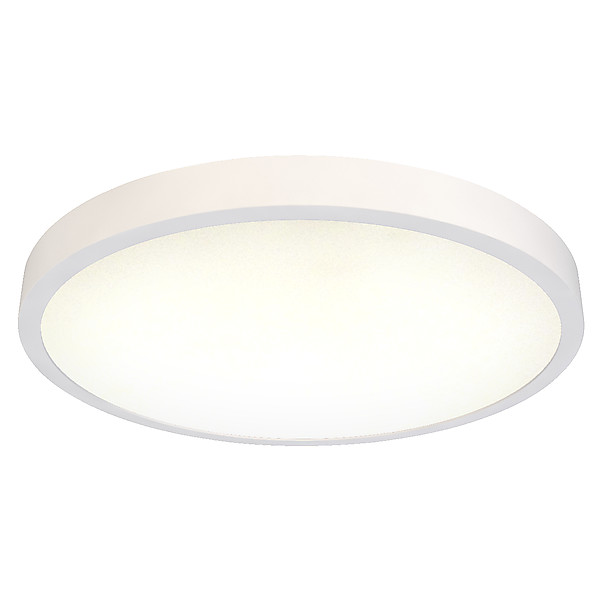
| Model | 36-7503-2 |
| Energy class | A |
| Bulb type | LED |
| Power | 24 W |
| IP class | IP54 |
| Dimable | Yes |
| Lumens | 1500 lm |
| Colour temperature | 2700 K |
| Colour rendering index (Ra) | 80 |
| Lighting time | 1.5 s |
| Temperature range | – 20 to +40 °C |
| Number of lighting cycles | 15 000 |
| Lifetime | 30 000 h |
| Replacable light source | No |
Task Lighting
1. Where is the task lighting? In this example, the focus will be on a kitchen counter top – the same one that the stairs were made out of, but this time used more conventionally.
2. Task lighting for a kitchen requires 500 lx.
3. What is the area where the task is taking place? The countertop measures 600 mm x 2 400 mm = 1.44 m², this could be rounded up to 1.5 m².
4. To find the number of lumens, multiply the lux requirement from step 2 by the area from step 3: 500 lx/m² x 1.5 m² = 750 lm.
I had hoped to find something equivalent at Jula, but found this set of downlights at Clas Ohlson: https://www.clasohlson.com/no/LED%20downlights/Pr365874000
As the specifications indicate, 4 downlights would be required to meet the task lighting needs of the countertop work area.
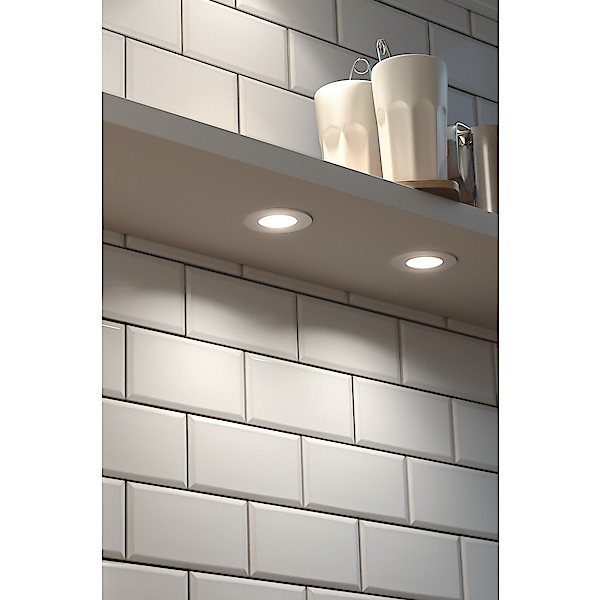
| Model | 36-5874 |
| Energy class | A+ |
| Bulb type | LED |
| Power | 3.3 W |
| IP class | IP20 |
| Dimable | No |
| Lumens | 190 lm |
| Colour temperature | 3 000 K |
| Colour rendering index (Ra) | 80 |
| Lighting time | 0.5 s |
| Temperature range | – 20 to +40 °C |
| Number of lighting cycles | 100 000 |
| Lifetime | unspecified |
| Replacable light source | No |
| Diameter: hole/ lamp | 60/ 65 mm |
| Depth | 15 mm |
